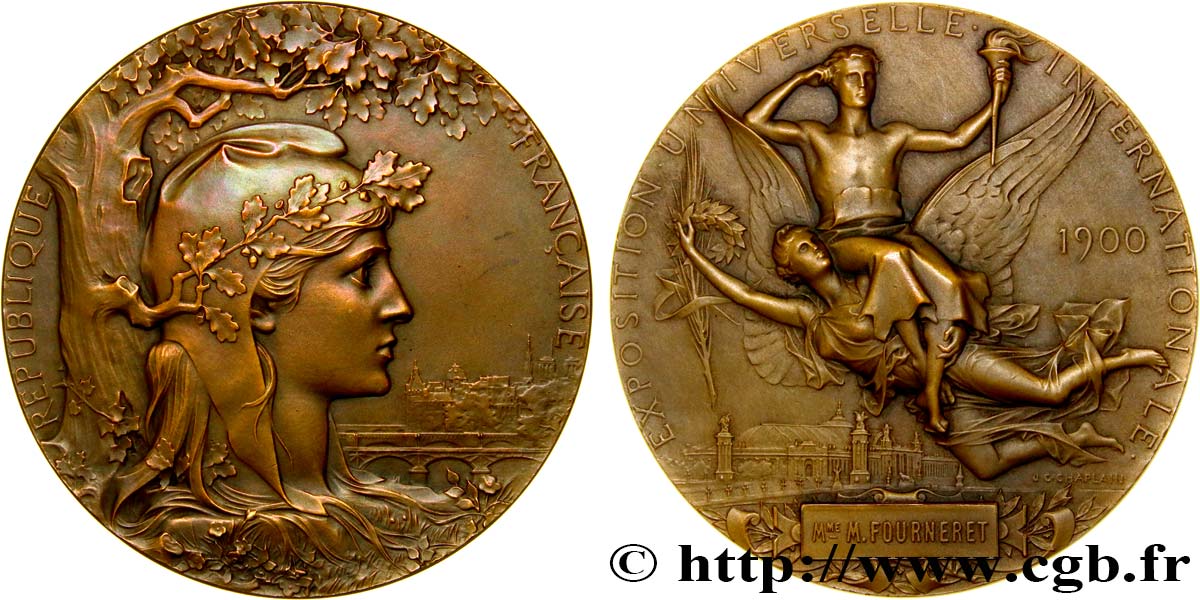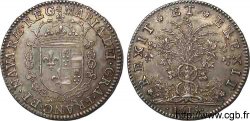Back 1/1
Live auction - fme_444101 - III REPUBLIC Médaille de l’exposition universelle de Paris
You must signin and be an approved bidder to bid, LOGIN TO BID. Accounts are subject to approval and the approval process takes place within 48 hours. Do not wait until the day a sale closes to register. Clicking on "BID" constitutes acceptance of the terms of use of cgb.fr private live auctions.
Bids must be placed in whole Euro amounts only. The sale will start closing at the time stated on the item description; any bids received at the site after the closing time will not be executed. Transmission times may vary and bids could be rejected if you wait until the last second. For further information check the Live auction FAQ
All winning bids are subject to a 18% buyer’s fee.
All winning bids are subject to a 18% buyer’s fee.
| Estimate : | 200 € |
| Price : | 100 € |
| Maximum bid : | 100 € |
| End of the sale : | 31 October 2017 17:34:34 |
| bidders : | 1 bidder |
Type : Médaille de l’exposition universelle de Paris
Date: 1900
Mint name / Town : 75 - Paris
Metal : bronze
Diameter : 63,7 mm
Orientation dies : 12 h.
Engraver CHAPLAIN Jules-Clément (1839-1909)
Weight : 98,2 g.
Edge : lisse + Corne BRONZE
Coments on the condition:
Superbe médaille avec une belle patine brune et brillante, vendue dans son coffret d’origine
Predigree :
Cette médaille provient de la collection Isaac Tual (né en 1884)
Obverse
Obverse legend : REPUBLIQUE - FRANCAISE.
Obverse description : Buste de Marianne à droite, coiffé du bonnet phrygien décoré par la branche de chêne de l’arbre derrière elle ; représentation de la ville de Paris et ses ponts à l’arrière plan.
Reverse
Reverse legend : EXPOSITION UNIVERSELLE INTERNATIONALE / 1900 // MME M. FOURNERET.
Reverse description : Un athlète portant la flamme, porté dans les airs par une victoire brandissant une couronne de lauriers ; Petit et Grand Palais en arrière plan.
Commentary
Médaille attribuée à Mme M. Fourneret.
L'Exposition universelle de 1900 est la cinquième Exposition universelle organisée à Paris après celle de 1855, celle de 1867, celle de 1878 et celle de 1889.
Annoncée le 13 juillet 1892, elle est inaugurée le 14 avril par le président Émile Loubet, puis elle ouvre au public le 15 avril. Elle se termine le 12 novembre, après 212 jours d'ouverture. Elle accueille plus de 50 millions de visiteurs.
Manifestation emblématique de la Belle Époque, dont le thème est « Le bilan d’un siècle », elle lègue à Paris plusieurs bâtiments dont le Petit Palais et le Grand Palais..
L'Exposition universelle de 1900 est la cinquième Exposition universelle organisée à Paris après celle de 1855, celle de 1867, celle de 1878 et celle de 1889.
Annoncée le 13 juillet 1892, elle est inaugurée le 14 avril par le président Émile Loubet, puis elle ouvre au public le 15 avril. Elle se termine le 12 novembre, après 212 jours d'ouverture. Elle accueille plus de 50 millions de visiteurs.
Manifestation emblématique de la Belle Époque, dont le thème est « Le bilan d’un siècle », elle lègue à Paris plusieurs bâtiments dont le Petit Palais et le Grand Palais..








 Report a mistake
Report a mistake Print the page
Print the page Share my selection
Share my selection Ask a question
Ask a question Consign / sell
Consign / sell
 Full data
Full data















